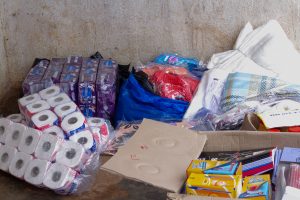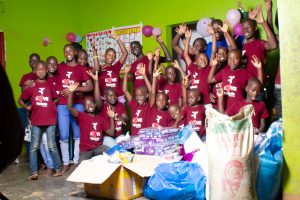The national Polio vaccination campaign was a three-day campaign. Aimed at reaching out to all children below the age of five. The target was to immunize 8.8 million children and also reach out to those who missed routine immunization. The exercise started on the 14th of January, 2021, and ended on the 16th which was a Sunday.
On the 17th of August 2021, the ministry of health declared Polio a Public Health Emergency in Uganda. This followed the positive laboratory tests from environmental samples in Kampala that confirmed Poliovirus Type 2. The World Health Organization certified Uganda and Africa as wild-Polio virus-free in August 2020. Transmitted from person to person or through contaminated water or food and multiplies inside the intestines. The virus spends through stool from an unvaccinated child which can cause sore throat, fever, tiredness, stomach ache, and paralysis.
The delivery of essential health services including routine immunization was affected extensively. In the process of mitigating the COVID-19 pandemic. Children immunized against vaccine-preventable diseases were fewer. This slowdown leads to the rebirth of Polio globally, including in Uganda. By the end of August, the Ministry of Health said that up to two million children had missed out on the Polio Vaccination.
The ministry of health brought it to itself to conduct a nationwide Polio immunization campaign in October and December 2021. During which the health workers were to visit house to house. To vaccinate children under the age of 5 years against Polio. To ensure children are safely vaccinated without the risk of getting affected with COVID_19. The health workers were to wear masks and follow SOPs.
Briefing from the Minister of Health
Dr. Jane Ruth Aceng the Health Minister told the journalists on Wednesday 12th that the new exercise will be conducted door to door. And this will be concurrent with the ongoing COVID-19 vaccinations. As a way to pave way for Polio drive, selected facilities across the country were halted. She was accompanied by Yonas Tegen, the World Health Organization representative to Uganda. And Munir Safielden the UNICEF representatives to Uganda. They flagged off immunization cold chain equipment at kololo Independence Grounds, Kampala.
Dr. Aceng confirmed that the equipment will go a long way in improving immunization services across the country. Gavi gave equipment worth USD 8.3 million. The vaccine alliance was given to districts to ease vaccine storage. These include 5 cold rooms, 2,000 compliant vaccine carriers, 1,435 fridges among others.
Launch of the immunization campaign.
The launch of the immunization campaign took place at Wakiso Health Centre IV on Thursday 13th. On Friday 14th, 2022 the immunization campaign in Uganda started from parts of Wakiso and Kampala. The parents got to know about the campaign through news and adverts on radios, television, and newspapers. The health workers moved from door to door while vaccinating the children. Even those at school. Since the immunization come at a time when children had gone back to school.
Some parents hid their children. They face a risk of having disabilities if not vaccinated. The consent of the parents in the case of immunization is not of importance says the health workers.
Dr. Alfred Driwale, the Programme Manager of the Uganda Expanded program on immunization (UNEPI) told URN. That the number of immunized children has been pilling over the years. He adds that the reason for this is accessibility for especially hard-to-reach areas.
According to the US-Based Centers for Disease Control and Prevention, polio, or poliomyelitis is a disabling and life-threatening disease. The virus can infect the spinal cord, causing paralysis, leading to permanent disability or death.
Polio has over the years proven to be a risk to all children. Love Uganda Foundation advises parents to comply and take their children to the health centers to get vaccines. To protect a child from polio you need two drops of the Polio vaccine.












 As I summarize, Gender-Based Violence must be addressed as soon as yesterday. . Reporting the cases of violence to the concerned people: like police concerned NGOs and other organizations. Volunteering in Uganda with its partners Tuyambe.Org and
As I summarize, Gender-Based Violence must be addressed as soon as yesterday. . Reporting the cases of violence to the concerned people: like police concerned NGOs and other organizations. Volunteering in Uganda with its partners Tuyambe.Org and